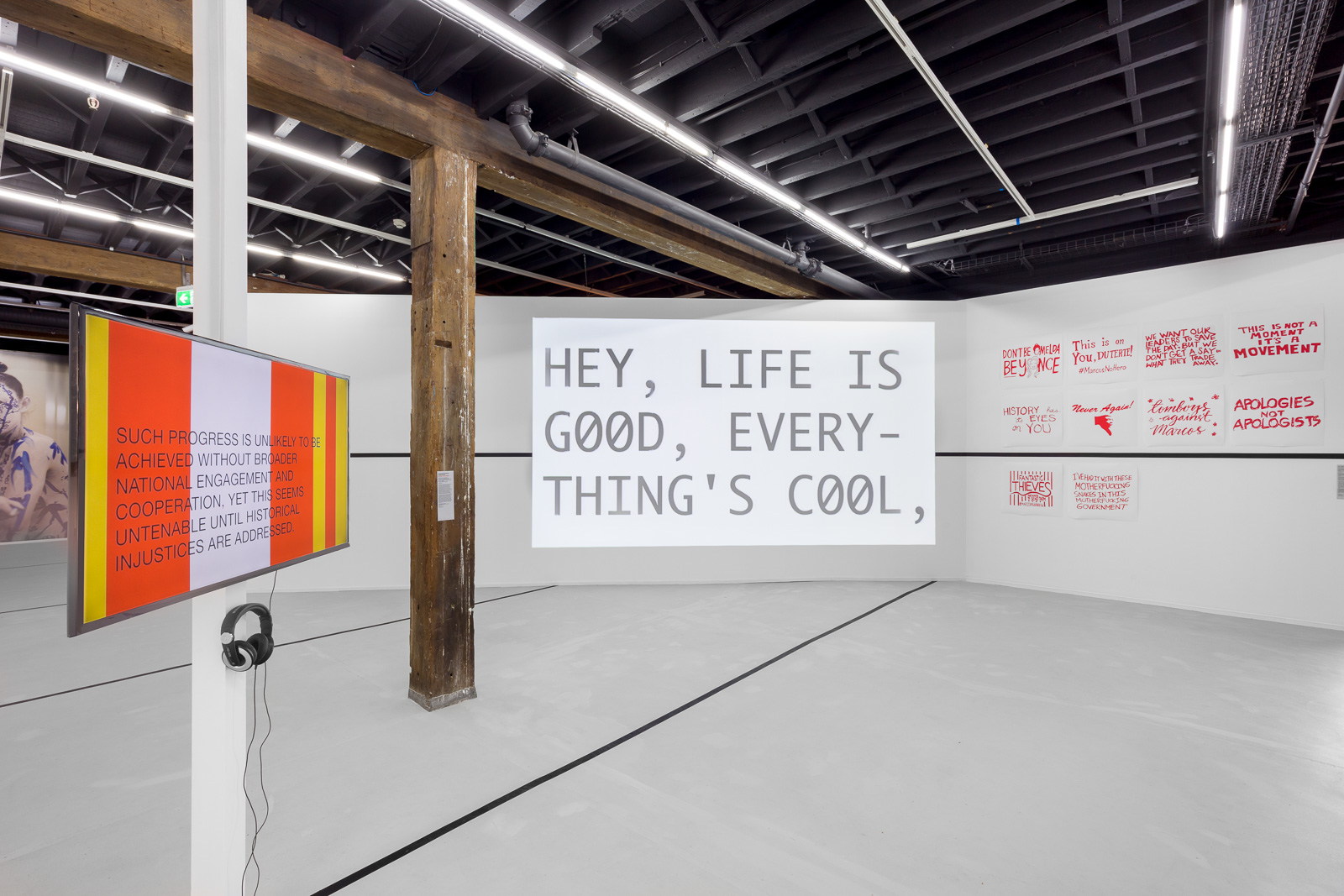Shows
52 Artists 52 Actions




Launched in September 2017 and curated by Talia Linz of Artspace, “52 Artists 52 Actions” was a year-long international curatorial endeavor in which 52 artists and collectives across 31 countries in the Asia-Pacific region were invited to stage “actions” and present new works via Instagram. This May, Artspace decided to take the initiative from the feeds of Instagram to their gallery walls, ambitiously giving all 52 artists involved space to exhibit. However, the outcome revealed that perhaps the project was best left on Instagram as a translation from virtual to physical space requires more than simply transposing the account’s posts into the gallery. Instagram allowed artists to caption their posts with necessary context and additional resources, along with notes on memories, community events, and topics of personal interest. This eclectic catalogue was compromised in the institutional realm of Artspace.
Admittedly, the attempt to emulate the egalitarianism of online spaces allows for pluralism. However, there are implications to losing the contexts of the works—many of which have a distinctly political bent—as they run the risk of simply becoming aestheticized. Venuri Perera’s photograph Banana Republic (2018), for example, depicts the artist in the midst of protest, holding a sign that refers to the 2018 Sri Lankan constitutional crisis in which president Maithripala Sirisena appointed former president Mahinda Rajapaksa as prime minister and then attempted to dissolve parliament. As much as the image of the artist stands as a universal symbol of protest, it also speaks to a culturally relative understanding of the political situation in Sri Lanka. Similarly, Sawangwongse Yawnghwe’s video YAWNGHWE OFFICE IN EXILE/SPECIAL RAPPORTEUR (2019) requires an understanding of conflicts in Myanmar as it refers to a number of ongoing incidents such as ethnic cleansing of Rohingya in Rakhine State and the arrest of Reuters journalists Wa Lone and Kyaw Soe Oo.
Undeniably there were artists who engaged effectively with the curatorial opportunities available. James Tylor’s installation, (Kaurna Mairna, Indigenous Plants from Adelaide South Australia) (2019), invited visitors to take seeds of Indigenous edible plants and grow them in their own gardens. An accompanying QR code linked to Tylor’s personal Instagram where more information about the plants was provided, thereby synthesizing the virtual and the physical.

While “52 Artists 52 Actions” attempted to eschew national groupings, the Artspace show was structured around “protest for social and political change,” imagining the Asia Pacific as rife with struggle. This echoes Geeta Kapur’s concerns around Australia’s potential cultural colonization as she “admonished Australia for taking too paternalistic an approach to the region.” For this reason, Young Hae-Chang Heavy Industries’ (YHCHI) video I GOT WHACKED IN THE FACE WITH A BASEBALL BAT (AND WHEN I CAME TO SAW LEONARDO’S LAST SUPPER ON A VELVET PAINTING HUNG OVER AN OLD SOFA) (2018) and Samson Young’s photograph City Garden (aquarium and cram school) (2019) proved to be strong as they were neither ostensibly from Korea or Hong Kong, respectively, nor overtly political. Instead, YHCHI’s video absurdly and humorously relays a story of its protagonist being hit by a baseball bat while Young’s unassuming image is reminiscent of a small 1980s neighborhood mall. These works punctuated the exhibition with moments of brevity and poeticism, revealing that politics is not formulaic or culturally stereotypical.
Art historian Francis Maravillas has also regarded Australia’s move to “center” itself as a major player within the Asia Pacific with skepticism, identifying an underlying “assumption about Australia’s position as a privileged curatorial subject, actively defining the conditions and coordinates of regional dialogue and exchange.” On Instagram, as the artists had complete authorship, these power dynamics were largely erased. In a conventional Sydney gallery setting, they are replicated (however unintentionally) once again. “52 Artists 52 Actions” was noble in its intent, and its selection of artists was significant in addressing parts of Asia (particularly in South and South-West Asia) that are oft-overlooked. One hopes that this is only the beginning of deeper, more sustained and ongoing commitment to truly understanding and engaging with the Asia-Pacific region.
“52 Artists 52 Actions” is on view at Artspace Sydney until August 4, 2019.
To read more of ArtAsiaPacific’s articles, visit our Digital Library.









